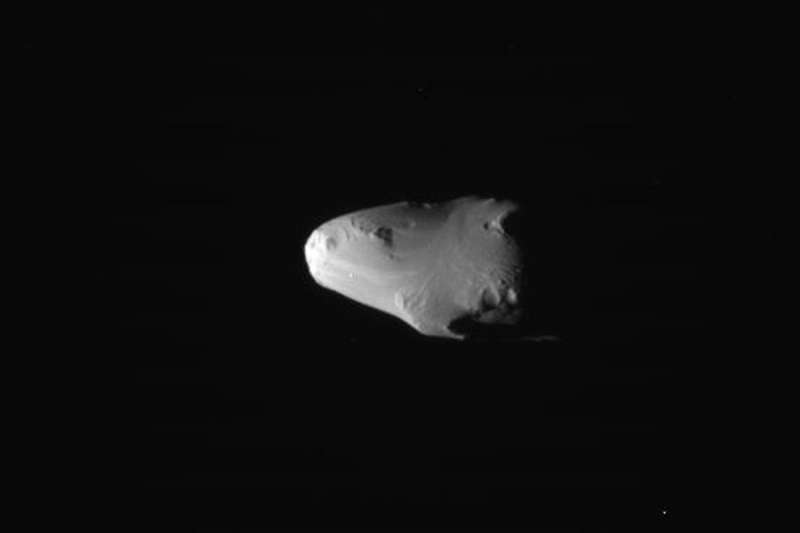An Unusually Smooth Surface on Saturns Calypso

Explanation:
Why is this moon of Saturn so smooth?
This past weekend, humanity's Saturn-orbiting
Cassini spacecraft
passed as close to Saturn's small moon
Calypso as it ever has, and imaged the small moon in unprecedented detail.
Pictured above is an early return, raw, unprocessed image of the 20-km long
irregularly shaped moon.
Like its sister moon
Telesto and the shepherd moon
Pandora, Calypso has shown itself to be usually smooth,
much smoother than most of Saturn's larger moons.
A leading hypothesis for
Calypso's smoothness is that much of the moon's surface is actually a relatively
loose jumble of rubble -- making
Calypso
a
rubble-pile moon.
The loose nature of the small
ice pieces
allows them to fill in many small craters and other surface features.
Calypso orbits Saturn always behind Saturn's much larger moon
Tethys, whereas
Telesto's orbit always precedes Tethys.
Calypso's extremely white surface -- not unlike
fresh snow -- may result from the
continuous accumulation of fresh ice particles falling in from
Saturn's E ring.
Authors & editors:
Robert Nemiroff
(MTU) &
Jerry Bonnell
(USRA)
NASA Web Site Statements, Warnings,
and Disclaimers
NASA Official: Jay Norris.
Specific
rights apply.
A service of:
LHEA at
NASA /
GSFC
& Michigan Tech. U.

